With global air traffic picking up after the pandemic, airport administrators have initiated massive infrastructure development programs. Thus, to accommodate increasing passenger numbers. These mammoth construction projects across Asia, the Middle East and into America are built through staggering multi-billion dollar capital infusions.
Enlarging terminals and runways does not come on the cheap. Nevertheless, supporters claim the economic advantages overshadow the enormous price tags. The following are the 10 largest airport projects in 2024 based on budget estimates.
Al Maktoum International Airport | Dubai
The most expensive airport development projects include Dubai’s expansive Al Maktoum International Airport expansion. It is also called Dubai World Central. It is identified as one of the largest airport projects.
The CKIA mega-hub was first launched in 2010 with the cargo and passenger flights beginning two years later. However, the establishment of this hub stalled after Covid-19 ravaged global travel in 2020. Nevertheless, with air traffic recovering in Dubai and globally, authorities renewed their commitment to the colossal phased expansion worth $33 billion.
When fully implemented according to the multi-decade vision, Al Maktoum will consist of five runways and have a throughput over 250 million travelers. Indeed, by the year 2050 making it the biggest airport in the world. The first stage alone will increase capacity to 130 million passengers annually through the end of this decade. Its backers claim that Al Maktoum’s immense scale will make Dubai the bridge between Europe, Asia, Africa and Middle East. Yet, critics believe such monumental development could overburden infrastructure. However, construction schedules are speeding up to revolutionize Dubai’s aviation capacities.
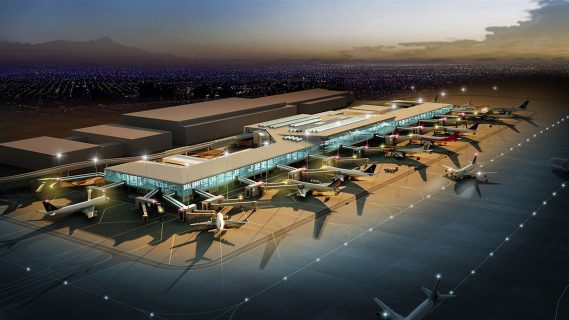
JFK Airport | USA
The second place on the top 10 list of largest airport projects goes to New York City’s John F. Kennedy International Airport. It enjoys an $18 billion makeover, one of the largest single terminal projects ever undertaken in the US.
At the heart of it lies building an enormous new Terminal 1 at a cost of $9.5 billion. This will replace both old Terminals 1 and Term The size of the future top-notch Terminal 1 is more than twice that of the old terminals. The megaproject that is intended to put JFK squarely into the 21st century and return it as a global leading gateway.
On the other hand, the large scale has received many comments regarding possible cost overruns and construction delays. Assuming all goes to plan, the project is due for completion in 2030. However, given the scale of a such project and threat of pandemic-related supply chain bottlenecks, labor shortages and other factors looming on schedule, the timeline remains vulnerable. Upon completion, the wide-reaching JFK redevelopment will renovate crucial terminals and gates. It will also restore roadways, parking, AirTrain connections and other vital infrastructure.
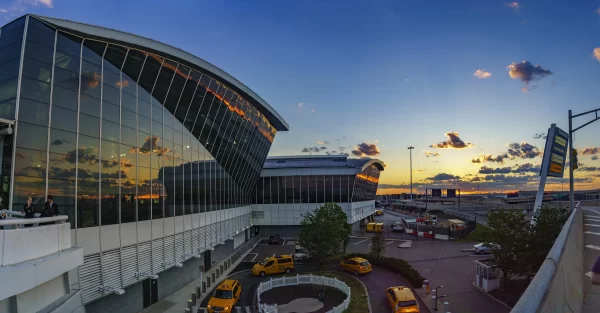
Heathrow Airport | UK
In third place of the largest airport project is Heathrow Airport in London and its controversial future development via a new third runway. The $17.4 billion construction plan is hotly contested between proponents. They emphasize economic benefits and opponents citing environmental concerns.
In 2015, the UK government allowed construction of the runway to cater for over 50 million additional passengers on a yearly basis. Nevertheless, the effort has been bedeviled by legal and climate challenges. However, in 2020 courts overturned the approval due to concerns about increased noise and emissions. However, Heathrow won an appeal and negotiations for a new runway were resumed. Despite the continued increases in demand, questions remain on final approvals and funding.
Heathrow would receive its long-awaited third runway if constructed. However, costs ballooned past $17 billion and timeframe is hazy in the midst of Britain’s volatile political climate. Besides, the post-pandemic economy brings financial uncertainties. However, airport management maintains that the increase in runway capacity is crucial not just for businesses but also for travelers as a competitive global hub. The fight for the Heathrow expansion appears to be set to continue.
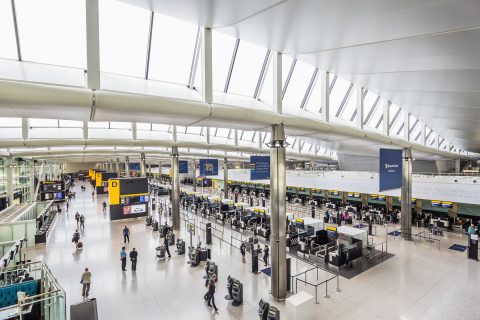
Long Thanh Int’l Airport | Vietnam
Fourth on the list of the largest airport projects is Vietnam’s new Long Thanh International Airport. It is 40 kilometers outside crowded Ho Chi Minh City. It is billed as Vietnam’s most costly ever infrastructural project worth $ 16 billion.
Long Thanh set foundation stone in the year 2021 amid much fanfare and represents country’s aviation aspirations. The multi-stage development has had its fair share of funding challenges, controversy associated with land acquisition and many other barriers. Still construction goes on at phase one’s terminal and runway. Officials claim that Long Thanh will relieve congestion at Tan Son Nhat Airport to allow the development of Vietnam’s vital tourism economy and international business linkages.
With everything in proceedings, this first element should be open by 2025 that can handle about 25 million passengers. This will be gradually expanded with extra terminals and a second runway to eventually accommodate 100 million customers annually. Hence, making Long Thanh the largest airport in the Vietnam. The sophistication of this project symbolizes national prestige but also poses economic dangers in case debt swells. However, leaders refer to this as their doorway to becoming part of Asia’s exclusive air transport hub.
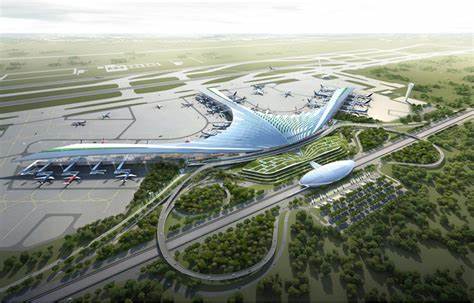
Los Angeles Int’l Airport | USA
Fifth on the list of largest airport project is Los Angeles International Airport. (LAX’s) $14 billion renovation project — being called LAX RIM — the largest infrastructure venture in the city of LA history. The preparations for hosting the 2028 summer Olympics have led to this wide-ranging modernization drive.
Beginning in 2009, the massive project has focused on building capacity, improving luxury services and promoting sustainability at LAX. Furthermore, completing construction region wide attention settles in. On the other hand, sheer size has historically been a source of complaints regarding inconvenience for travelers. Officials argue that the short-term inconveniences will bring long-term benefits in terms of resident and visitor satisfaction once installed.
Transportation relays such as the Automated People Mover will ensure that hub city’s busy airport get well connected to future venues, athlete lodgings and event sites. But issues still persist on one undertaking such an enormous project in time, primarily due to shortages of supplies. However, after the difficult times encountered during the pandemic era; tourism and airport authorities are finally upgrading obsolete facilities. Thus, will secure LAX’s leading position as a West Coast hub for decades while putting Los Angeles globally.
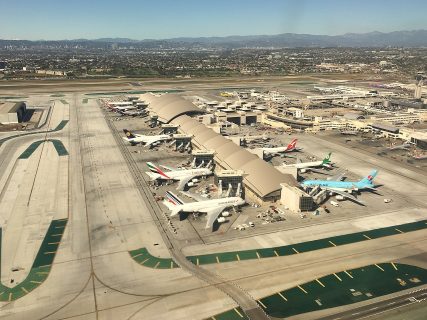
Sangley Point Int’l Airport | Philippines
The Philippines comes in at sixth place in largest airport projects with its new Sangley Point International Airport development. It is in south of the heavily populated city of Manila. The proposed air hub is priced at $ 11 billion, fighting the mounting congestion problems across Manila’s two existing international airports.
Planners picture Sangley Point to open in phases starting with initial operation in 2028 for 60 passengers a year. Additionally, growing into four runways and terminals by 2040 handling over 135 million passengers annually. Developers promise to accelerate economic growth but still need permit and grapple with difficulty in funding acquisition. Moreover, current Manila airports contemplate traffic and revenue dilution.
Government officials argue that a joint multi-airport approach combining Sangley Point’s capacity alongside main hubs is essential. This is for the capital to cope with rivals in Asia and maintain tourism momentum as the Philippines rises from lockdown. The gigantic figures envisioned for the development of Sangley Point points to ambition. However, the actualization is largely dependent on public and private investment partnerships.
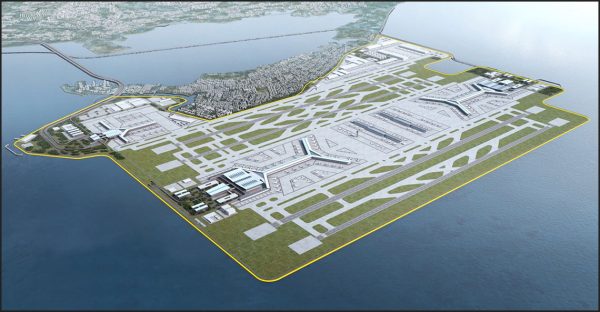
Changi Airport T5 | Singapore
At number seven on the largest airport projects, $10 billion worth of Singapore Changi Airport’s Terminal 5 currently in the early stages of development.
Changi’s T5, scheduled for completion in 2030 is aspiring to be one of the biggest airport terminals with respect to size and passenger capacity worldwide. To grow Changi’s capacity by an estimated 50 million travelers per annum, T5 aims to centralize operations from the current Terminal 2 into one integrated and enlarged facility. Along with increased capabilities across Changi’s remaining terminals, the overall mega-project aims for Singapore to fixate further onto securing Changi’s renowned position among Asia’s leading airports.
Since regaining the title of the world’s best airport in 2022, T5 will help Changi entrench its competitive advantage through efficient design, luxury services and sustainability. Yet the gargantuan nearly $10 billion venture does not go without risk factors ranging from possible budget issues to integration among the old and new infrastructure. If carried out according to the plan over the 2020s, Changi could be a definite leader in global air transport for many decades to come.
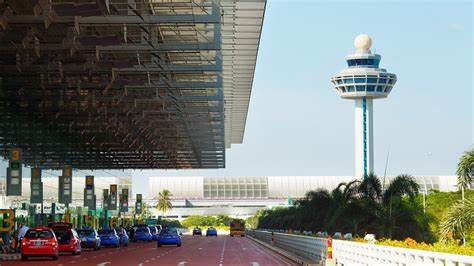
U-Tapao Aviation City | Thailand
At number eight of the largest airport project we find a Thai plan worth $8.8 billion. Conceived as a future hub that will connect air, rail and roadways. The mega-project aims to provide new infrastructure spending on foreign investment and tourism beyond Bangkok. However, the development has already been confronted with delays since original approval years ago.
The grandiose scope to match the giants of the region has also raised questions over feasibility. However, plans reveal the goals of a sophisticated transit-oriented city in areas that were once quiet provinces of Rayong and Chonburi. Supporters also claim that in case it is actually implemented, U-Tapao Aviation City will drive growth of the Eastern Economic Corridor and develop a third pillar airport.
With the final phases not completed until possibly towards 2030s, the Thai political instability adds a note of uncertainty. However, scale and timeline for U-Tapao Aviation City indicates a majestic aspiration but future success relies on factors such as changing leadership and uncertain funding.
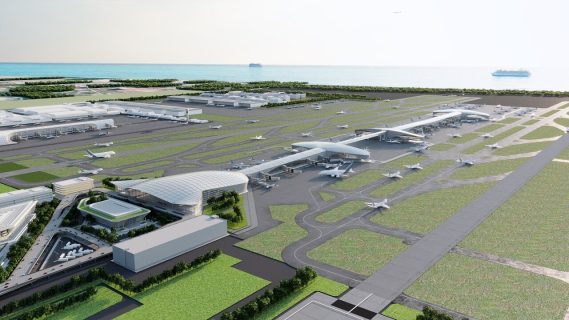
Solidarity Transport Hub | Poland
At number 9 is a cutting-edge new largest airport project, for Poland’s capital city region, the European part of the top ten. Known as the Solidarity Transport Hub but often referred to as the Central Polish Airport. This $8 billion vision envisions construction of a gigantic Centra facility capable of serving 45 million passengers throughput. Located at a distance of about 40 kilometers from Warsaw, the airport aims at relieving congestion and increasing capacity in Poland’s capital city.
Indeed, the project is criticized in terms of environmental impact and budget considerations. The task of financing Poland in recovering from the fallout is not an easy one. However, if successful, supporters mention Central Airport is to be one of Europe’s largest hubs when fully functional in 2027.
The vision includes connecting the high-speed rail to achieve interconnectivity as a multi-modal solution. Considering Poland’s favorable geographical location as an airway junction between East and West, the flagship project could greatly improve the country’s international connectivity. However, its performance hinges on the political will and ingenious private alliances to fully materialize the innovative goals.
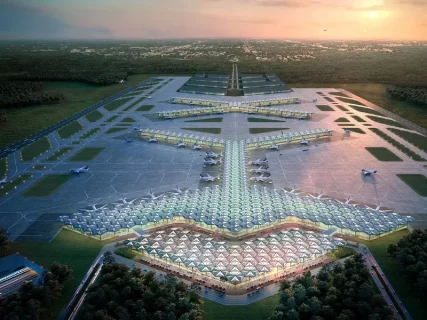
Noida International Airport | India
Closing the top 10 largest airport projects is India’s Noida International Airport undergoing construction in the state of Uttar Pradesh outside the national capital region, Delhi.
In phase one, the brand-new hub will receive an initial $4 billion investment and is to opening in 2024 with a capacity of over 12 million passengers per annum. Future upgrades in subsequent phases will increase capacity by 75 million passengers annually to make it the largest airport in India at Noida.
With the nation’s highly congested aviation industry recovering after the pandemic, champions of and promoters Noida International hail its ability. Yet, criticisms about lack of proper transport connectivity have also emanated from the remoteness of the airport. Inability to get funding also creates credibility issues given the economic environment. However, the Indian government of Prime Minister Modi showcases Noida cementing India’s rise as an air travel juggernaut. Run by Zurich Airport International, the project signifies both local drive and foreign skill. If successful as the gemstone addition to India’s congested airport network, Noida could revolutionize travel for the world’s second largest populated nation by mid-century.
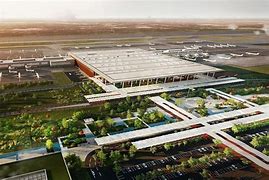
Also Read: Burbank Airport Breaks Ground on $1.2B New Terminal Project: Elevate BUR
Also Read: The World’s First Airport Electric Vehicle Charging Station Network Unveiled in London Gatwick
Also Read: Techo Takhmao International Airport, the next largest airport in Cambodia, taking shape
